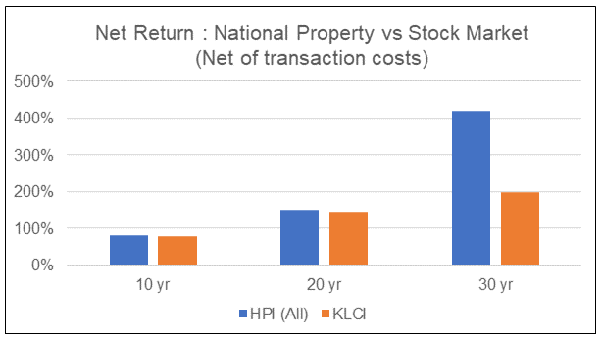
Credit risk and defaults are two of the major concerns when investing in ultra short bond funds. Ultra-short bond funds don't have as much credit risk since government securities carry less credit risk. However, derivatives and securities with lower credit ratings carry greater risks. Credit risk is therefore not as significant for ultra-short bond funds. Nonetheless, they may be more risky than other types of investments.
Vanguard Ultra Short Bond ETF
In 1986, Vanguard Ultra Short Bond ETF first became available as a Maryland corporation. In 1998 it was reorganized and made a Delaware legal trust. Before that, the Vanguard Bond Index Fund, Inc. was the name of this ETF. The 1940 Act classifies the Vanguard Ultra Short Bond ETF an open-end managed investment company. This means that it can be diversified.
Vanguard Ultra Short Bond ETF provides current income and has limited volatility. It also offers aggregate performance that is consistent with ultra-short investment grade fixed income securities. It invests at the minimum 80% of its assets within fixed income securities. Vanguard Fixed Income Group places a high value on relative values and adjusts the portfolio's time to reflect these factors. Vanguard Ultra Short Bond ETF is consistent with the fixed income group's goals.

Putnam Ultra Short Duration Income Fund, (PSDYX).
The Putnam Ultra Short Duration Income Fund aims to generate current income while preserving capital. It also maintains liquidity. The fund invests mainly in investment-grade money market securities, but may also invest in U.S. dollars-denominated securities. The average effective duration of the fund is 1 year. It may lose its value in an increase or decrease in interest rates.
YieldPlus
YieldPlus ultra long bond fund is popular among investors who want to get out of bad-credit bonds market. Morningstar rates the fund at two stars. The Sharpe ratio is -1.2. A Sharpe ratio of -1.2 is usually indicative of better risk-adjusted yields. The fund suffered losses in 2007 after investors began withdrawing their funds. In August 2007, the Schwab YieldPlus fund's redemptions had surpassed $1 billion.
As the credit crisis unfolded in mid-2007, the NAV of the YieldPlus Fund began to decline. The fund was forced to sell assets in the depressed market to raise cash. Schwab's difficult relationship with investors only worsened after some investors pulled their cash from the funds. Investors and brokers both have been fired. Responding to the problems, some brokers provided clients with the email address of YieldPlus manager. The fund's asset base dropped to $1.5 billion last week, compared with $13.5 billion at the end of last year. The fund was also forced to sell bonds that were tied to troubled businesses.
Credit risk is less of concern
It is rare that an ultra-short bonds fund will default or experience a credit rating decline, so the risk of losing your money is very low. Funds are generally insured to FDIC up to $250,000 for government securities. This makes them a safer option. These funds are not suitable for all investors. Credit risk may also result from investment in assets that have a lower credit rating, such as derivatives.

Ultra-short-term bond funds can have lower yields that conventional short-term funds. Ultra-short fund's focus is on short-term bonds, so they tend to be less responsive to changes in interest rates. Short-term bonds aren't as smart and perform less under near-term rate changes. If a bond defaults, you could lose your money.
FAQ
How are securities traded
Stock market: Investors buy shares of companies to make money. Shares are issued by companies to raise capital and sold to investors. Investors then sell these shares back to the company when they decide to profit from owning the company's assets.
Supply and Demand determine the price at which stocks trade in open market. The price goes up when there are fewer sellers than buyers. Prices fall when there are many buyers.
There are two methods to trade stocks.
-
Directly from your company
-
Through a broker
What is the difference of a broker versus a financial adviser?
Brokers specialize in helping people and businesses sell and buy stocks and other securities. They take care of all the paperwork involved in the transaction.
Financial advisors are experts in the field of personal finances. They use their expertise to help clients plan for retirement, prepare for emergencies, and achieve financial goals.
Banks, insurance companies and other institutions may employ financial advisors. They may also work as independent professionals for a fee.
Consider taking courses in marketing, accounting, or finance to begin a career as a financial advisor. Also, you'll need to learn about different types of investments.
How Share Prices Are Set?
Investors decide the share price. They are looking to return their investment. They want to make profits from the company. So they buy shares at a certain price. If the share price increases, the investor makes more money. If the share price goes down, the investor will lose money.
Investors are motivated to make as much as possible. They invest in companies to achieve this goal. They are able to make lots of cash.
How can people lose their money in the stock exchange?
The stock market is not a place where you make money by buying low and selling high. It's a place where you lose money by buying high and selling low.
The stock exchange is a great place to invest if you are open to taking on risks. They are willing to sell stocks when they believe they are too expensive and buy stocks at a price they don't think is fair.
They expect to make money from the market's fluctuations. But they need to be careful or they may lose all their investment.
How can I find a great investment company?
It is important to find one that charges low fees, provides high-quality administration, and offers a diverse portfolio. The type of security in your account will determine the fees. Some companies charge nothing for holding cash while others charge an annual flat fee, regardless of the amount you deposit. Others may charge a percentage or your entire assets.
You should also find out what kind of performance history they have. Companies with poor performance records might not be right for you. You want to avoid companies with low net asset value (NAV) and those with very volatile NAVs.
It is also important to examine their investment philosophy. A company that invests in high-return investments should be open to taking risks. If they aren't willing to take risk, they may not meet your expectations.
Statistics
- Even if you find talent for trading stocks, allocating more than 10% of your portfolio to an individual stock can expose your savings to too much volatility. (nerdwallet.com)
- US resident who opens a new IBKR Pro individual or joint account receives a 0.25% rate reduction on margin loans. (nerdwallet.com)
- "If all of your money's in one stock, you could potentially lose 50% of it overnight," Moore says. (nerdwallet.com)
- The S&P 500 has grown about 10.5% per year since its establishment in the 1920s. (investopedia.com)
External Links
How To
How to create a trading plan
A trading plan helps you manage your money effectively. It helps you understand your financial situation and goals.
Before you start a trading strategy, think about what you are trying to accomplish. You might want to save money, earn income, or spend less. If you're saving money you might choose to invest in bonds and shares. You can save interest by buying a house or opening a savings account. And if you want to spend less, perhaps you'd like to go on holiday or buy yourself something nice.
Once you decide what you want to do, you'll need a starting point. This depends on where your home is and whether you have loans or other debts. It's also important to think about how much you make every week or month. The amount you take home after tax is called your income.
Next, you need to make sure that you have enough money to cover your expenses. These include bills, rent, food, travel costs, and anything else you need to pay. Your monthly spending includes all these items.
Finally, figure out what amount you have left over at month's end. This is your net available income.
You now have all the information you need to make the most of your money.
To get started, you can download one on the internet. Ask an investor to teach you how to create one.
Here's an example.
This graph shows your total income and expenditures so far. Notice that it includes your current bank balance and investment portfolio.
And here's another example. This was created by an accountant.
It will allow you to calculate the risk that you are able to afford.
Remember: don't try to predict the future. Instead, be focused on today's money management.